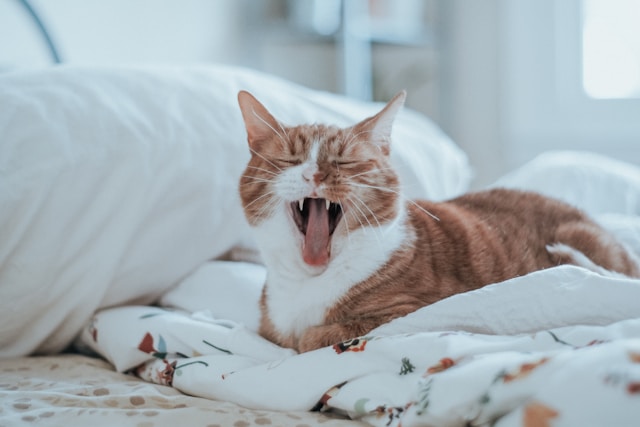
Cats are notoriously good at hiding pain, a trait that has been passed down through generations as a survival mechanism. In the wild, showing signs of weakness can make them vulnerable to predators, so they’ve become masters at masking discomfort. However, this can make it challenging for cat owners to detect when their feline friend is suffering. Understanding the subtle signs of pain in cats is crucial for ensuring their well-being and addressing any health issues early. In this blog, we’ll explore the various ways to recognize pain in cats, from behavioral changes to physical symptoms, and what you can do to help your cat live a comfortable life.
1. Changes in Behavior
Cats often show pain through subtle changes in their behavior. If you notice any of the following, it may be time to consult your veterinarian:
- Reduced Activity or Lethargy: A cat in pain might be less active than usual. They may avoid jumping, running, or playing, preferring to rest in one spot for extended periods.
- Increased Aggression or Irritability: If a normally docile cat suddenly becomes aggressive, hisses, or swats when touched, it could be a sign that they are in pain.
- Hiding: Cats may seek out hiding spots more frequently if they are uncomfortable or in pain. This is their way of retreating to a safe space.
- Changes in Grooming Habits: Overgrooming a specific area can indicate localized pain, such as from arthritis or a wound. Conversely, a cat in pain might groom less frequently, leading to an unkempt coat.
- Altered Eating and Drinking Habits: Pain can affect a cat’s appetite. They may eat or drink less, or show reluctance to eat dry food if they have dental pain.
2. Physical Signs of Pain
Apart from behavioral changes, physical symptoms can also indicate that a cat is experiencing pain:
- Limping or Favoring a Limb: If a cat is limping or avoiding putting weight on a particular limb, it could be due to an injury, arthritis, or another painful condition.
- Changes in Posture: A cat in pain may adopt unusual postures, such as hunching their back or curling up tightly. They may also lie down more frequently to avoid standing or walking.
- Facial Expressions: While more subtle, some cats may show pain through changes in their facial expressions. Flattened ears, squinting eyes, or a tense jaw can all be indicators of discomfort.
- Vocalization: Increased vocalization, such as growling, hissing, or excessive meowing, can be a sign that your cat is trying to communicate their pain.
- Breathing Changes: Rapid or shallow breathing can indicate pain, especially if the cat is trying to minimize movement in the chest or abdomen.
3. Changes in Litter Box Habits
A sudden change in litter box habits can be a red flag for pain in cats:
- Difficulty in Posturing: Cats with arthritis or other painful conditions may have difficulty posturing to urinate or defecate, leading to accidents outside the litter box.
- Straining or Crying: Straining to urinate or defecate, or crying out while doing so, can indicate pain related to urinary tract infections, constipation, or other issues.
- Changes in Frequency: A decrease or increase in the frequency of urination or defecation can also indicate underlying pain or discomfort.
4. Understanding Chronic Pain in Cats
Chronic pain, such as from arthritis or dental disease, can be particularly challenging to detect because it develops gradually. Cats may adapt to their discomfort, making it less noticeable over time. However, chronic pain can significantly impact a cat’s quality of life, leading to long-term behavioral and physical changes.
- Arthritis: Older cats are particularly prone to arthritis, which can cause persistent pain in the joints. Look for signs like reluctance to jump, stiffness, or difficulty climbing stairs.
- Dental Disease: Dental pain is another common issue in cats that can go unnoticed. Bad breath, pawing at the mouth, or dropping food while eating can all be signs of dental discomfort.
5. When to See a Veterinarian
If you suspect that your cat is in pain, it’s essential to consult your veterinarian as soon as possible. They can perform a thorough examination and may recommend diagnostic tests to determine the underlying cause of the pain. Early intervention is crucial to managing pain effectively and preventing further health complications.
- Pain Management: Your veterinarian may prescribe pain relief medications, dietary supplements, or suggest lifestyle changes to help manage your cat’s pain. In some cases, surgery or other treatments may be necessary.
- Environmental Adjustments: Making your home more comfortable for a cat in pain can also be beneficial. Providing soft bedding, ramps to favorite resting spots, and easy access to food and water can all help reduce discomfort.
6. The Importance of Regular Check-Ups
Regular veterinary check-ups are vital for detecting pain and other health issues early. Even if your cat appears healthy, annual or bi-annual exams can help catch subtle signs of pain before they become more severe. Your veterinarian can also guide you on what to watch for as your cat ages, as older cats are more prone to developing chronic pain conditions.

Conclusion
Recognizing pain in cats requires careful observation and an understanding of their behavior and physical cues. While cats are skilled at hiding their pain, being attuned to subtle changes can help you identify when something is wrong. If you notice any of the signs mentioned above, it’s essential to seek veterinary care promptly. With proper diagnosis and management, you can help your cat live a more comfortable and pain-free life. Remember, your cat relies on you to be their advocate and ensure their well-being, so never hesitate to act if you suspect they are in pain.

